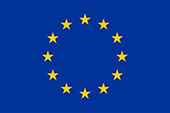The tutorial followed the planned contents about modelling, simulation, and control of marine craft, given by Dr. Edin Omerdić from UL.
The first day focused on an introduction to kinematics of marine crafts, including definition and transformation between reference frames. Special attention was devoted to quaternions and their role in vector rotations. Simulation models of open-frame ROVs, based on attitude representation with Euler Angles and Unit Quaternions, were gradually developed throughout the lecture, and finally validated in the hands-on simulation part, including a link to virtual reality underwater scenes to visualise ROV motion.
The second day focused on control aspects of a marine craft, including design and implementation of low-level controllers and fault-tolerant control systems. Autotuning methods for finding optimal gains was described. The hybrid algorithm for control allocation, capable of finding a feasible solution over the entire attainable input control space, was explained in detail. 3D visualisation of input and true control spaces was demonstrated, providing deep insight into the geometry of underlying control allocation optimisation problems. Real-world applications of proposed algorithms were be presented. The hands-on section of the day focused on LabVIEW simulation models and interfacing with other languages, as well as work on a specially-developed demonstration platform OceanRINGS.
The third day focused on development of an interface between control software and physical actuators (thrusters). Methods to overcome friction/dead zones for low speed rotations were demonstrated. The hands-on segment featured an overview of using FPGA to generate PWM signals for high precision speed and direction control of Blue Robotics T200 thrusters.
The outcomes of the tutorial were:
- Participants learned basic principles of modelling, simulation and control of marine crafts, including transformation of reference frames, kinematics and dynamics equations of motion, disturbances, control allocation, and low-level motor control.
- Participants explored tools for simulation, control design, and real-time control using MATLAB, LabVIEW, myRIO and ROV thrusters.
The tutorial also presented many opportunities for free discussion exchange of know-how and experiences and allowed meeting students and researchers from University of Zagreb, with several conversations about past and future projects, the state of the art of several research fields of interest, and potential collaborations.
